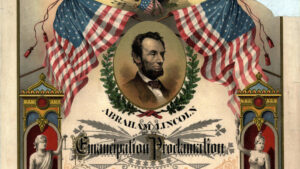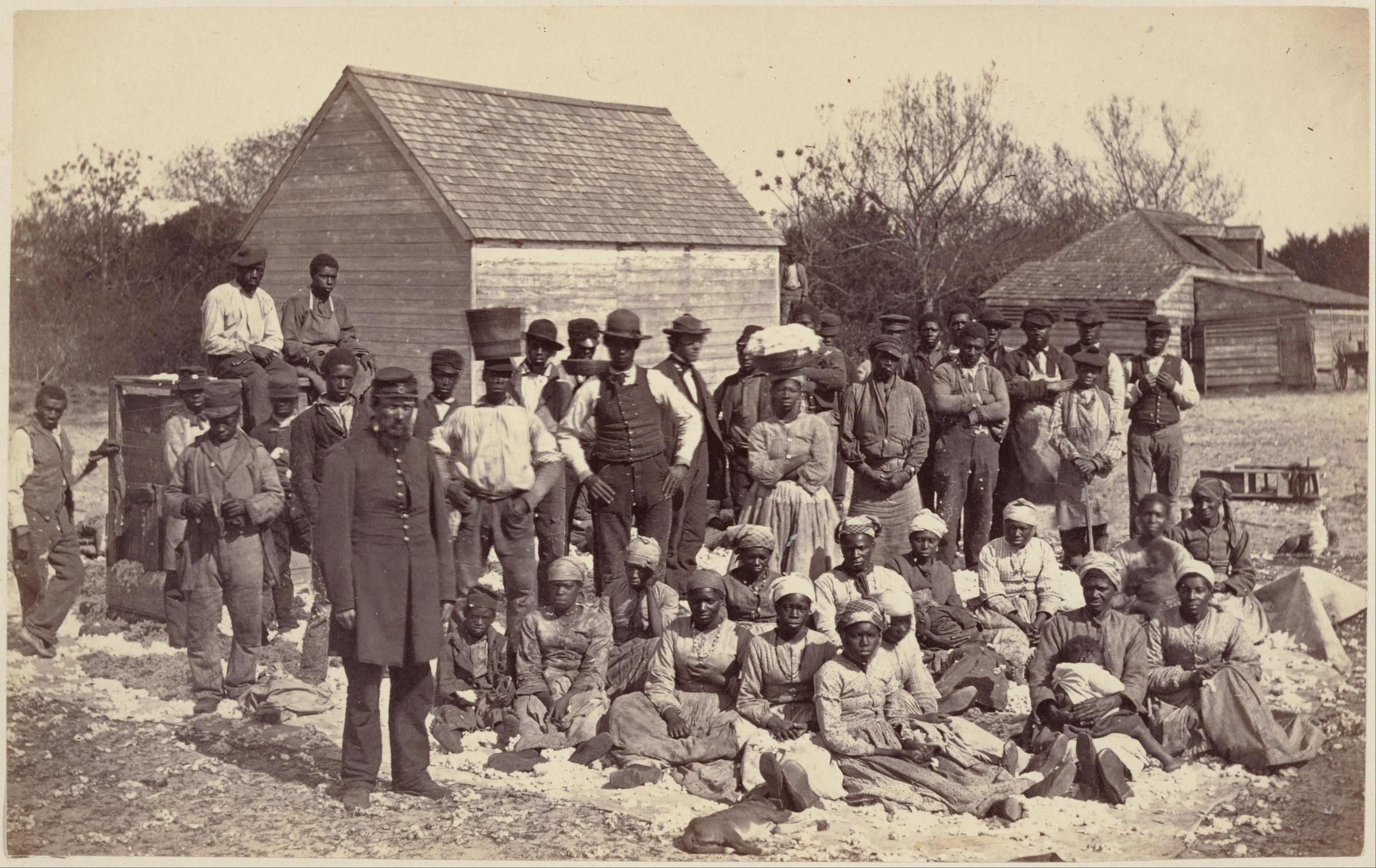Juneteenth as we know it today, is a holiday celebrated annually on June 19th. The day itself has been celebrated through the years and signifies the decree that was issued on June 19th, 1865 by Major General Gordon Granger, which recognized and proclaimed freedom for slaves in the state of Texas. The day officially became a federal holiday in the United States as the Juneteenth National Independence Day Act was signed into law by the Biden Administration in June of 2021. Let’s now look into the history behind this historic holiday, and examine the relevance it holds today. Tracing back to Civil War times, President Abraham Lincoln (Republican Party) issued the prelusive Emancipation Proclamation in September of 1862 which declared and promised freedom for all enslaved individuals in rebel states beginning the 1st of the following year. The proclamation was officially ordered on January 1st, 1863, and the law was specifically aimed toward states under Confederate rule, which made it illegal for any persons to hold slaves in their possession. Despite the executive order, it did not pertain to states ruled by The Union.
Although the proclamation was limited it was a major turning point for the country, and made a significant impact towards the freedom of the enslaved in the United States, primarily for African-Americans, but it also banked upon a victory by The Union Army to be fully successful. Upon issuing the executive order, approximately over 3 million slaves were namely free, but not necessarily right away. At the time, the United States was engulfed in the Civil War between the Confederate and Union Army, and slaves under Confederate rule were unfortunately not freed immediately. As the Union Army gradually took control over Confederate land, slaves were freed accordingly. Lincoln’s order also motivated and enabled many slaves to escape from their slaveholders after the proclamation.
Another major factor in guaranteeing freedom for slaves in the United States depended on the Constitution. In Spring of 1864, an amendment banning slavery was taken into consideration and proposed by the United States Senate. The amendment would eventually pass in both the Senate and House of Representatives in January of 1865, and 27 out of 36 states would eventually ratify (approve) what is known as the 13th amendment to the Constitution. President Lincoln had been a strong proponent of the amendment, which officially abolished slavery in all of the United States. For Lincoln, his push and advocacy for the end of slavery paid off, but he was shockingly assassinated in April of 1865, a month before the end of the Civil War, in which the Union Army became victorious. Lincoln also wasn’t present to witness the full approval of the 13th Amendment as full ratification took place that same year in December of 1865. Looking back, we now know the Emancipation Proclamation set the precedent for what we now know as “Juneteenth,” and for the 13th Amendment to end slavery nationwide.

Courtesy of the Charles L. Blockson Afro-American Collection
On June 19th, 1865, 2 months after Lincoln’s assassination, and 2 years after the Proclamation was originally announced, did slaves in the State of Texas hear of the ‘Emancipation’ ruling. Major General Gordon Granger signed and announced Order No. 3 that particular day which stated “all slaves are free.” The General had arrived in Galveston, Texas on June 19, 1865, to oversee military troops and take charge of reconstructing the state post-Civil-War. Previously, Texas had been under Confederate laws, and General Granger’s signing of Order No. 3 officially proclaimed that all slaves were free in Texas, which evoked celebrations in the state in the years that followed, and what we know now today as “Juneteeth.” The Order was subsequently posted around town by military personnel to alert the public. Although the order was announced, it also created a complex divide between slaves and their masters. Some masters withheld the news from their slaves, and even those who knew of the order continued working in enslaved conditions due to confusion, or fears of violence being inflicted upon them. The Order wasn’t necessarily enforced right away, and the rhetoric of Order No.3 also comes with some complexities as it not only proclaimed freedom for those enslaved but also the advisement for slaves to “remain at their present homes and work for wages,” according to the Order No. 3 written by General Granger. In these terms, it appears the Order had limitations for slaves, although it legally freed them.
General Order No. 3- Announced by General Gordon Granger
“The people are informed that in accordance with a Proclamation from the Executive of the United States, all slaves are free. This involves an absolute equality of personal rights and rights of property, between former masters and slaves, and the connection heretofore existing between them, become that between employer and hired labor. The freed are advised to remain at their present homes, and work for wages. They are informed that they will not be allowed to collect at military posts; and that they will not be supported in idleness either there or elsewhere.” (American Battlefield Trust)
Despite the complexities and uncertainty of Order No. 3, many African-Americans in Texas took part in celebrations starting the year after in 1866. Since then, the day has been celebrated throughout Texas amongst the Black community, and other states eventually followed. Juneteenth is the largest and oldest celebration commemorating the end of slavery. With the passing of the 13th Amendment in 1865 outlawing slavery for all in the United States, it sealed the Emancipation Proclamation and Juneteenth celebrations. Post-Civil-War, Southern states went through an era of Reconstruction with military personnel overseeing new policies that were instilled. Former Confederate States had to uphold new laws and civil rights for Blacks, and the United States in general went through an overhaul of policy transformation which heavily affected the South.
The complex divide of racism and slavery post-Civil-War and Reconstruction would go on to affect the United States in the years following through the 20th century. It wasn’t until the Civil Rights Movement that occurred in the 1950s- 1960s that the Black community was able to further their cause against discrimination and segregation. As we celebrate Juneteenth today, let’s reflect and acknowledge the historic moments and events that occurred in our country’s difficult past that paved the way for equality, rights, and freedom for us all.
References:
Exploring the history of Juneteenth, a day of celebration and reflection | Temple Now
What Is Juneteenth? – The New York Times (nytimes.com)
Juneteenth: reflect, act and celebrate | Every Child Thrives
Juneteenth World Wide Celebration
A Proclamation on Juneteenth Day of Observance, 2022 | The White House
What is the Emancipation Proclamation? | National Bell Festival (bells.org)
The History of General Order No. 3 and Juneteenth | Time
Civil War – Causes, Dates & Battles | HISTORY
The Emancipation Proclamation | National Archives
Ratifying the Thirteenth Amendment, 1866 | Gilder Lehrman Institute of American History
General Order No. 3 | American Battlefield Trust (battlefields.org)
National Archives Safeguards Original ‘Juneteenth’ General Order | National Archives
Confederate States of America | History, President, Map, Facts, & Flag | Britannica
Reconstruction: A Timeline of the Post-Civil War Era | HISTORY
Civil Rights Movement: Timeline, Key Events & Leaders | HISTORY











